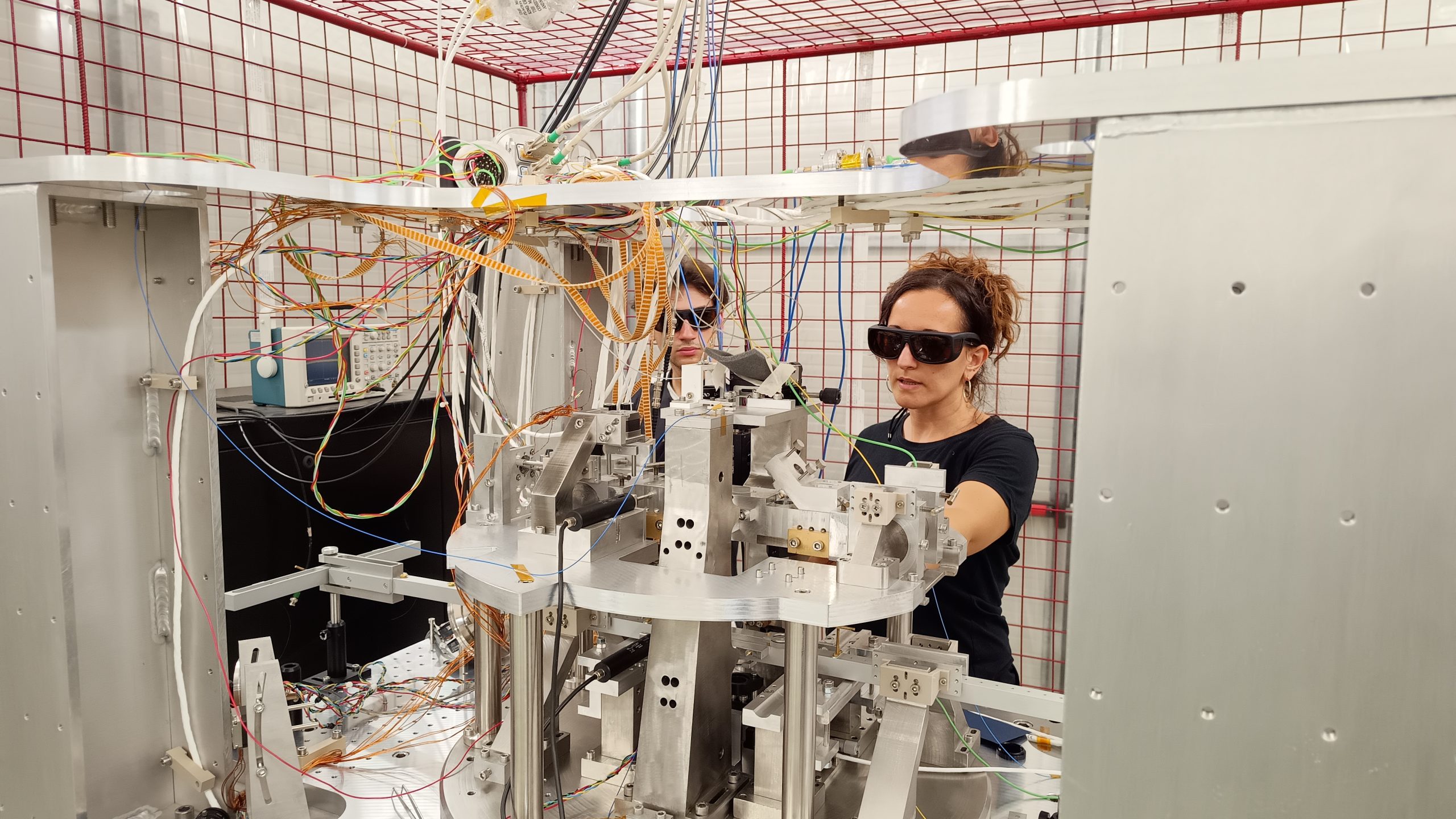by Gloria Nobile
In the first weeks of July, two test samples were installed for the first time for the Archimedes experiment, hosted by the SAR-GRAV laboratory in the area of the former Sos Enattos mine, the Italian location candidate to host the future Einstein Telescope gravitational wave observatory, and where significant scientific experiments are already underway.
Archimedes fully fits into the context of fundamental physics: it is an experiment aiming to “weigh the vacuum,” that is, to measure the interaction between electromagnetic vacuum fluctuations and the gravitational field (we wrote about the first results of the experiment last March).
In quantum mechanics, a vacuum is not really empty, but is “filled” with particles and antiparticles that continuously create and annihilate each other, causing incessant energy fluctuations known as vacuum energy. In general relativity, energy is equivalent to mass according to the well-known equation E = mc², which means that every form of “classical” energy exerts a gravitational force and has weight, generally very small. Regarding vacuum energy, which is a form of quantum energy, it is unclear whether and to what extent it has measurable weight. To detect it, Archimedes must operate under conditions of absolute seismic and anthropic silence at Sos Enattos, which, thanks to its unique geological characteristics in Europe, is an ideal place for such experiments.
Archimedes is an ultrasensitive balance consisting of two suspended arms, a lower one about one meter and forty centimeters long, lightweight and with a reduced moment of inertia – making it more easily movable and thus more reactive to weight changes – and an upper one with a higher moment of inertia (therefore less susceptible to small oscillations) and serving as a reference tiltmeter for high-precision inclination measurements.
The experimental apparatus has been assembled over time, with the latest update carried out in the first weeks of July. This time, suspensions were added to the lower arm, where test samples were hung to test the balance’s response: weight variations of the samples cause the lower arm to tilt relative to the upper arm, which is instead designed to be little affected. In this way, the balance can measure the relative oscillations between the two arms, determining the weight changes of the samples.
«If both arms were shaken by an earthquake, they would move together and the relative tilt, that is, the difference in inclination between the two arms, would be zero», explains Luciano Errico, a researcher at the University “Federico II” of Naples and involved in the scientific activity of the Archimedes experiment. «However, if the lower arm – acting as a balance during measurement – detects a weight change, it starts to oscillate; the upper arm, on the other hand, free of disturbances, remains stable, and thus a relative tilt between the two arms is observed».
Additionally, in the fall, a thermal modulation system is expected to be installed to heat one of the two samples and observe whether the thermal change results in an increase in its weight. The goal is to reveal the so-called “weight of heat,” to verify an effect of Albert Einstein‘s general relativity not yet experimentally demonstrated, nearly a hundred years after its theoretical prediction.
To ensure maximum sensitivity, the design of the balance has been conceived to reduce the influence of seismic and other environmental disturbances. «This type of weight measurement thus becomes independent of ground shaking. Moreover, we are in Sos Enattos, where seismic activity is low», concludes Errico. «By adopting a double arm, we are further isolated from seismic vibrations».
The data from this experiment are therefore very useful also for the search for gravitational waves: monitoring ground oscillations is indeed crucial for the success of the Einstein Telescope, which, if hosted at the Sos Enattos site, would operate in the same geophysical context as Archimedes.
The Archimedes experiment is coordinated by Enrico Calloni – from the University of Naples “Federico II” and the Naples section of National Institute for Nuclear Physics (INFN) – and is the result of a collaboration led by the INFN, which includes the Universities of Sassari, “Federico II” and Sapienza of Rome, the European Gravitational Observatory (EGO), the National Institute of Optics of the CNR (CNR-INO), and the Center for Theoretical Physics of the University of Marseille (France).

